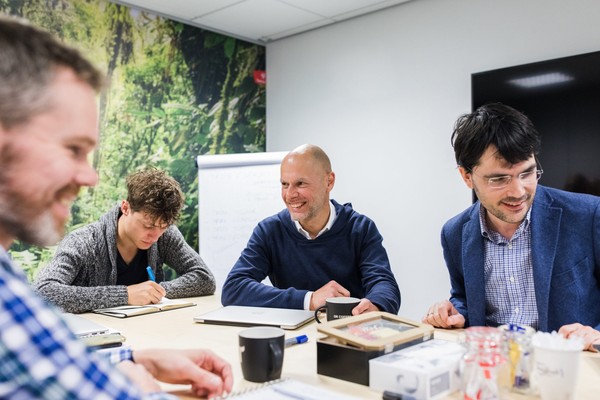Design smart sensor technology for medical pillow
For AVM patients, blood loss can occur at night without them noticing. Timely warning is crucial, while false alarms (e.g. caused by harmless moisture loss) must be avoided.

For patients with AVM, nighttime is a particularly vulnerable period. Blood loss from the head can occur, requiring immediate intervention. (In some cases, specially trained dogs are even used to detect unsafe situations.) 'Smart' pillows can detect moisture loss, but they cannot distinguish between harmless fluids (such as sweat, tears, or saliva) and blood. The challenge: how can we make the pillow smarter and improve nighttime safety for AVM patients?
Problem Description
Arteriovenous malformation (AVM) is a serious congenital vascular condition that presents in varying degrees of severity. At night, patients may experience blood loss without realising it.
A 'smart pillow' already exists that detects moisture loss and issues warnings, but it frequently triggers false alarms when detecting harmless fluids. A sensor network (possibly embedded or locally intelligent) could provide faster and more accurate warnings when danger arises. Technologies such as nanotubes, odour sensors, and AI-driven protocols could be integrated into an initial (virtual) test system.
This is an open research question—other combinations of technical and social solutions may also be possible.
Assignment Description
The first phase of the research involves a morphological analysis to identify the most promising sensor and detection technologies for integration into a smart pillow that can provide timely warnings to AVM patients at night. A promising combination will be further developed, and selected components may undergo initial experimental testing.
The final deliverable will be a proposal/recommendation for further (commercial) product development.
Profile
You have a strong understanding of the interaction between technology and usability in vulnerable patient groups. Their quality of life is the primary focus of this design challenge.
Key skills for this assignment include literature research, engaging with the target group, broad technological exploration, designing and testing sensors/tools—all of which come together in a unique way in this project.






